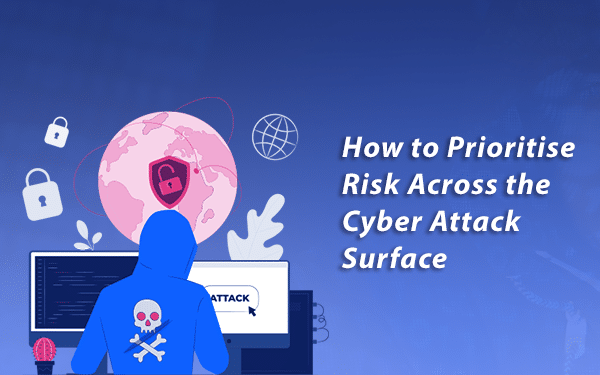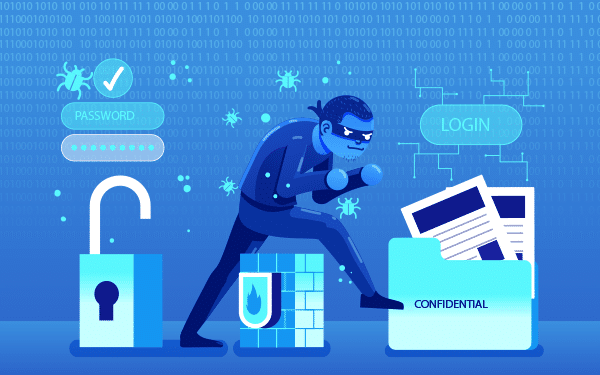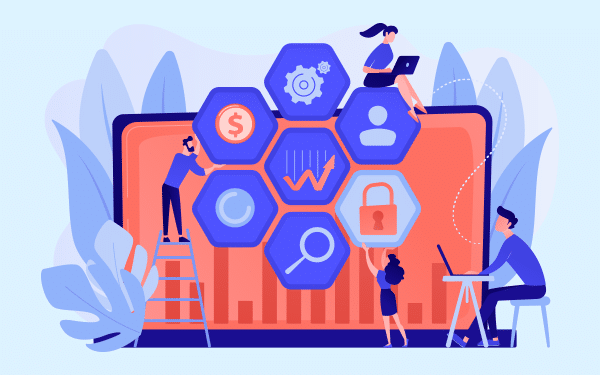
05 Aug HOW TO PRIORITISE RISK ACROSS THE CYBER ATTACK SURFACE
How to Prioritise Risk Across the Cyber Attack Surface
Organisations are rapidly shifting their businesses and operations to decentralise environments. The digital ecosystems are growing exponentially, and the process is also accelerated by the pandemic. Remote working environments and swift adoption of cloud-based technologies to run the business are increasing the number of digital touchpoints. The increase in touchpoints or endpoints results in an expanded or a large attack surface which the attackers can easily exploit. The exposure of a large attack surface makes it difficult for the managers and the IT department to detect or pinpoint an attack. The large surface area also makes it difficult to identify risks and threats, which makes the system vulnerable. Attack surface management helps in discovering risks and threats and also prevents an attack.
What is an attack surface?
An attack surface of an organisation consists of all the hardware, software, SaaS and cloud assets and tools that are required to process and store data. These components are accessible to the external environment and form attack vectors through which an attacker or a malicious actor can manipulate or launch an external attack on the security network. All in all, the attack surface is a sum of all possible security risk exposures. Broadly the attack surface includes:

Known assets:Internal assets such as websites, servers, security tools, endpoints.
Unknown assets:Shadow or orphaned IT infrastructure that is no longer used or discarded by an organisation. Includes websites that were created for a particular purpose and then discarded
Rogue assets:Includes endpoints vulnerabilities, hardware misconfiguration and misconfiguration of security systems which can be exploited or impersonated by threat actors
Vendors:Includes vendors assets and network systems connected to the organisation’s network security system. Attack and vendor system compromise is a third-party risk that can cause data breaches to the organisation as well.
Read Also: Popular Penetration Testing Tools
What is Attack surface management?

Attack surface management is the continuous discovery, inventory, classification, prioritisation and security monitoring of external digital assets or tools that contain, process and transmit sensitive organisational data. With corporate security perimeters in place, the attack surface is much easier to manage a difficult to penetrate. With the advent of cloud technologies and decentralisation, the attack surfaces have increased, and the digital assets and network systems are no longer separated by a permitter. These exposed surfaces are vulnerable and prone to attacks.
Attack surface management is important because it mitigates the existing risks and prevents potential threats and attacks which arise due to a variety of factors such as exposed components, unknown open-source software tools, vendor managed assets, human errors such as clicking on phishing emails and granting unauthorised access, large scale and targeted attacks on the company.
Assessing and inventorying the digital assets from time to time can greatly reduce the risk of surface attacks and data breaches.
Components of robust surface attack management solution
Attack surface management has five components
Discovery:The initial step of attack surface management is the discovery and mapping of all digital assets that are responsible for the transmission, process and storage of sensitive data.Mapping and discovery of assets connected to the external environment help us to protect them by adopting various security measures before they are spun up by a malicious actor. The digital assets can be organisation owned or third-party owned. Those digital assets that should be mapped are Web applications, APIs, cloud storage, network devices, domain names, IoT endpoints
Classification: After inventorying the assets, the next step is to classify and label the assets based on their type, functions, properties, business criticality and ownership. This process of system segmentation and classification helps with easy integration with other systems and easy detection of threats, risks and attacks. Classification of assets allows ownership of different assets to teams. This ensures that regular operational reports are documented, and the response team is responsible for its maintenance.
Risk scoring and security ratings:Organisations have a lot of digital fluctuating assets. Risk scoring and security ratings help the organisation understand what information is an asset disclosing and whether that information will lead to a security or a data breach. Risk scoring will also help in prioritising the assets which have critical information, and its penetration can cost the organisation. The assets should be continuously detected, scanned and scored for risk to mitigate threats and to help the organisation to focus on assets that are critical.
Constant security monitoring:Since many organisations have adopted cloud technologies and IaaS, the digital assets are no longer in a secure organisational perimeter. Hence the exposed surfaces have to be continuously monitored to detect issues such as vulnerabilities, risks, security issues, misconfiguration and compliance issues. A good attack surface management plan will constantly monitor for any threats and thwart an attack successfully.
Add Your Heading Text Here

Reducing your attack surface is also an effective way of preventing threats and attacks by malicious actors. The following are the ways in which you can do it
Eliminate complexities:Eliminate complexities that stem from poor policy management and misconfiguration. Complex policy management increases the risk of human errors and thus makes the system vulnerable to an attack.
Visualise the vulnerabilities:Work on assets that have a high-risk score. Creating a real-time model of your network system can give you the missing context and help you to visualise vulnerabilities.
Endpoint observation: Monitoring endpoints for deviating or abnormal behaviours help you in reducing the attack surface.Monitoring network connections, as well as user behaviour, is also critical for timely threat detection and response. Draft policies to ensure that endpoints can control the flow of data and access. This will help in anomaly detection and prevent an attack.
Segment the networks: Network segmentation helps in creating barriers for the attackers to travel through the network segments. The attackers cannot pivot a compromised system and move laterally towards other networks if the networks are segmented. Network segmentation not only reduces the surface area but also helps classifying assets as critical, which minimises the dwell time of the attackers on the system.
Analyse the security data:Carry out analysis such as Security configuration assessments, traffic flow analysis and quantitative risk scores frequently to manage vulnerabilities and risk detection better. Analysis of this data can give you an idea of where the likelihood of a threat or an attack lies and helps the organisation to make a more robust security system.
Read Also:Sql Injection Attack


